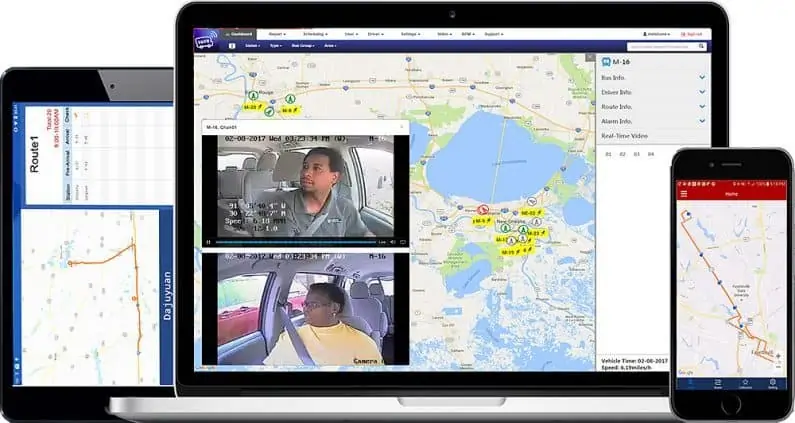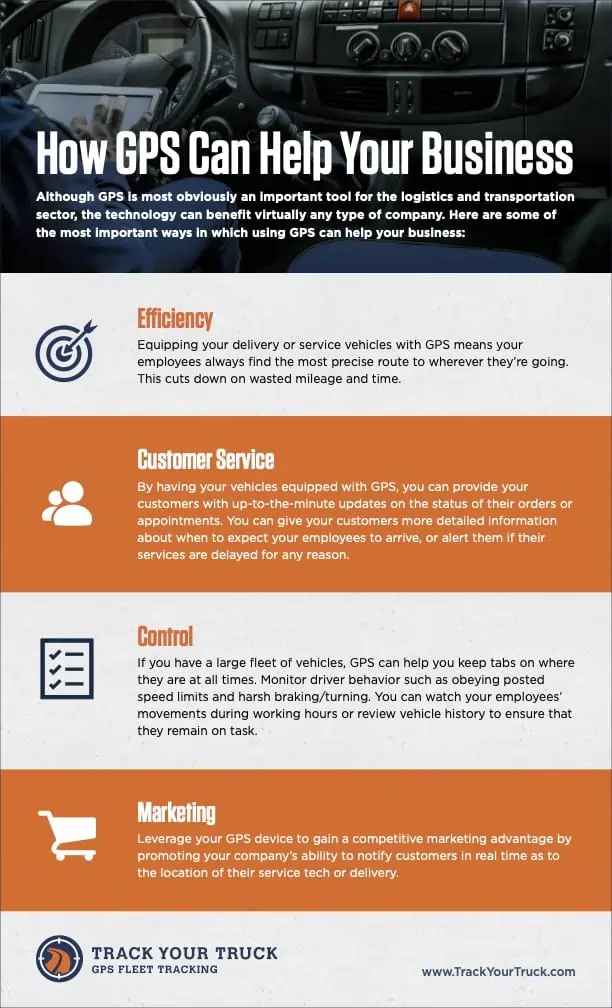Before going into how to choose the best fleet management software, first let’s talk about what fleet management software is and how it can benefit OTR fleets. A very simplified definition for Fleet management software is the software utilized by companies or organizations to help manage and operate a fleet of vehicles.
The software should be thought of as the brains and other devices, the extremities that feed the software with information. The software then decodes and presents it to the user in a manner that makes sense to them. The system can include cameras, GPS, DVRs, the vehicles’ diagnostic port reader (OBD), panic buttons, and more.
Fleet sizes and travel vary from company to company so that specific needs may differ from another fleet’s needs. One thing any decent management software type will do is make it easier to coordinate and manage your fleet through various collecting and storing methods.
Fleet management software benefits are directly linked to their available features, the importance to your company’s needs, and how you use those features.
Your fleet management software choices should help your company be compliant, promote safety, capture data, increase productivity, improve communications, track vehicles and assets, and collect vital statistics at the least.
To go into more detail about each of these areas, I will describe each area briefly.
Compliance
Software should assist with regulatory compliance, for example, Driver Vehicle Inspection Reporting (DVIR), electronic logging device, etc.
Safety
Vehicle and driver safety is crucial for the wellbeing of those working in your fleet, others on the road, and your profits. Poorly maintained vehicles reduce the size of your fleet during repairs.
Harsh driving may lead to accidents or breakdowns, cause delays in deliveries, and possible insurance nightmares. Cameras/DVRs, accelerometers (typically on a GPS device), and fleet management software that monitors vehicle health and driver habits diminish these costly issues.
Capture Data
There will be some data not included in the compliance section, which is essential. This can consist of video during alarm situations (hard braking, impact, speeding, incident buttons, etc.) as well as unloading and loading.
These videos can help with driving behavior, insurance claims, proof of assets being picked up and delivered without damage, and more. The other data from other devices are historical routes do determine congestion and route optimization, speeds and miles traveled, and more.
Productivity
Efficient operation of vehicles to reduce fuel consumption, improve route efficiency, and increase compliance and safety will all make your fleet more productive by reducing downtime for accidents and maintenance. The most effective fleet management systems should provide a complete package of options for vehicles, drivers, and managers to maximize fleet productivity.
Communication
Communication with drivers is vital. However, drivers must occasionally communicate safely without taking their hands off the wheel or their eyes off the road. Hands-free communication options allow drivers to correspond with others without compromising their performance on the road. This does not replace a CB radio; it merely enhances it.
Tracking
Tracking vehicles and assets gives you information about travel time and alerts you to any potential delays in the arrival of deliveries or vehicles. Software solutions for managing a fleet should accurately tell the fleet manager where either assets or vehicles are in real-time.
Analytics
Analyzing a vehicle’s performance can help fleet managers plan preventative maintenance or determine when a vehicle needs an inspection to address a growing problem. The management software should also collect information about driver habits to allow the fleet manager to improve training in safe operations on the road for those drivers who spend too much time idling, braking harshly, or speeding.
Now for the part that you’ve been waiting for: How to choose the best fleet management software solution for you.
When comparing the different solutions, consider some of the following aspects and how important these are to you:
Features
Match the features the software offers to what your fleet needs.
Flexibility
Your business will go through changes, and you need a fleet management software that is adaptable so you can scale features and benefits as required.
Customer support
Eventually, you may need some help with the software. A robust customer support system from the software provider can ensure that a minor technical problem with the software does not cause an unnecessary delay in operations.
Installation
Look at who will be installing the system hardware, the length of time for installation, and the cost of the installation and activation (if any) of the software.
Before identifying the right software, you need to know what is vital for your company to get from the program. If you are changing your fleet management software, find the flaws and gaps with the features you need. If you are entirely new to this software, note what is important, what can be of use (but not a need), and what is not essential to you at all. Do not make quick choices throughout the process, but follow this process or something similar to narrow down the options to find the best fit for your company.
The next thing to do is to research the software companies, their general pricing (to obtain an average price range for what you need), and if it fits your budget. Eliminate companies that don’t offer the fleet management features that will help you attain your company’s goals
After you’ve narrowed down the options as much as possible from research, request live demos. These demos will allow you to see how their system operates and its ease of use first-hand (not just what they show and claim on their marketing material). Suppose you have time and are down to a couple of companies; you can ask if you can get a test unit to install on a vehicle to use for a month and get your employees’ (or your own) opinions on which one is the best.
Once you’ve chosen an appropriate fleet management program, have the devices and software installed on your fleet. You don’t want to put your entire fleet out of commission for installation, so you may have to either rotate the vehicles in and out (i.e., take two off-line for 2-4 hours, install equipment, then release them out, and bring two more in) or have the software provider come out multiple times to minimize service disruptions.
In conclusion, as with any new system, you will need to train all your drivers and fleet managers in using the program correctly. Schedule regular training sessions and encourage drivers and managers to use the software to get buy-in. You could also offer rewards for those who use the software correctly or drivers who are driving safely.
Author Bio:
Jayesh Mehta is the Director of Marketing at Fortress Mobile. He is also the author of “Rogue’s Guide to Acquisition: Principles from the Final Frontier” listed on Bill Gates Recommended Summer Reading of 2012. Jayesh has been in the marketing field since 2001 and with Fortress Mobile since 2020.



Hey Jayesh, thanks for sharing such a great article.
Have the gadgets and software installed on your fleet after you’ve picked an acceptable fleet management application. Because you don’t want to take your entire fleet out of operation for installation, you may need to rotate vehicles in and out or have the software vendor come out many times.